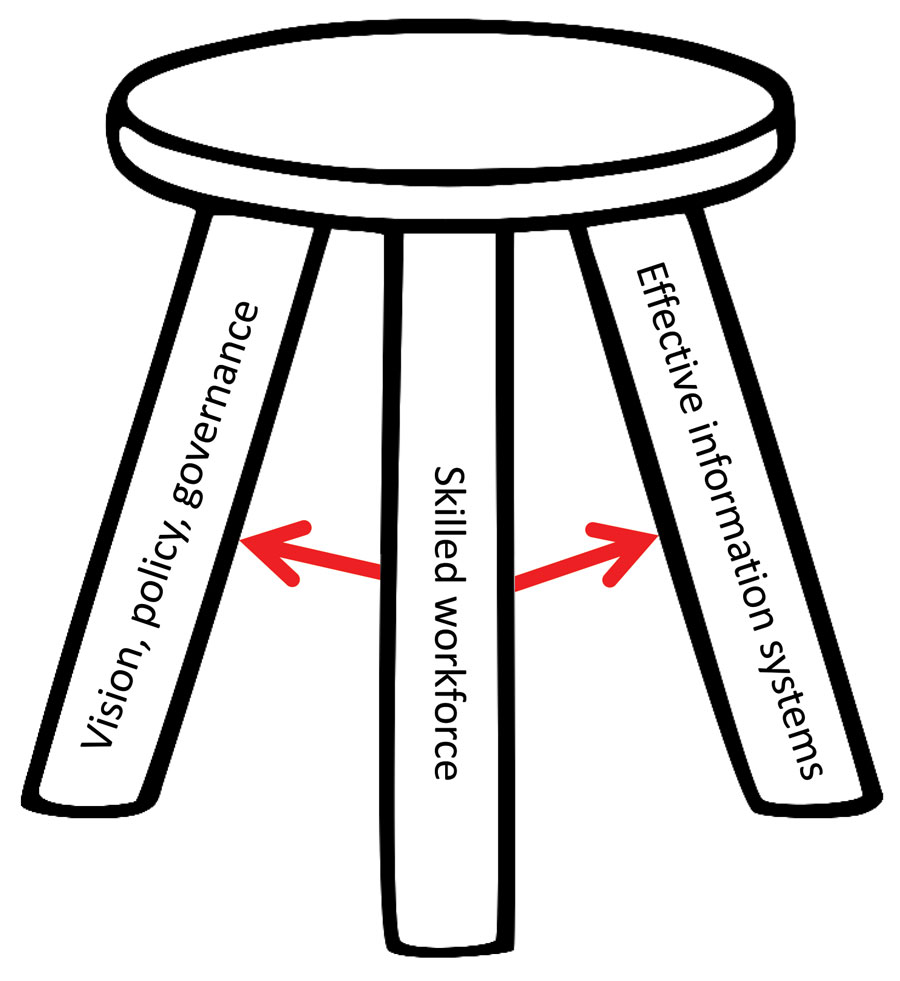Volume 28, Supplement—December 2022
SUPPLEMENT ISSUE
Surveillance
Leveraging PEPFAR-Supported Health Information Systems for COVID-19 Pandemic Response
Figure 2

Figure 2. Core pillars of the US President’s Emergency Plan for AIDS Relief–supported informatics-savvy health organizations leveraged for COVID-19 pandemic response. The 3 pillars of an information-savvy health organization are supported by Technical Assistance Platform technical areas.
1These first authors contributed equally to this article.
2These senior authors contributed equally to this article.
Page created: September 03, 2022
Page updated: December 11, 2022
Page reviewed: December 11, 2022
The conclusions, findings, and opinions expressed by authors contributing to this journal do not necessarily reflect the official position of the U.S. Department of Health and Human Services, the Public Health Service, the Centers for Disease Control and Prevention, or the authors' affiliated institutions. Use of trade names is for identification only and does not imply endorsement by any of the groups named above.